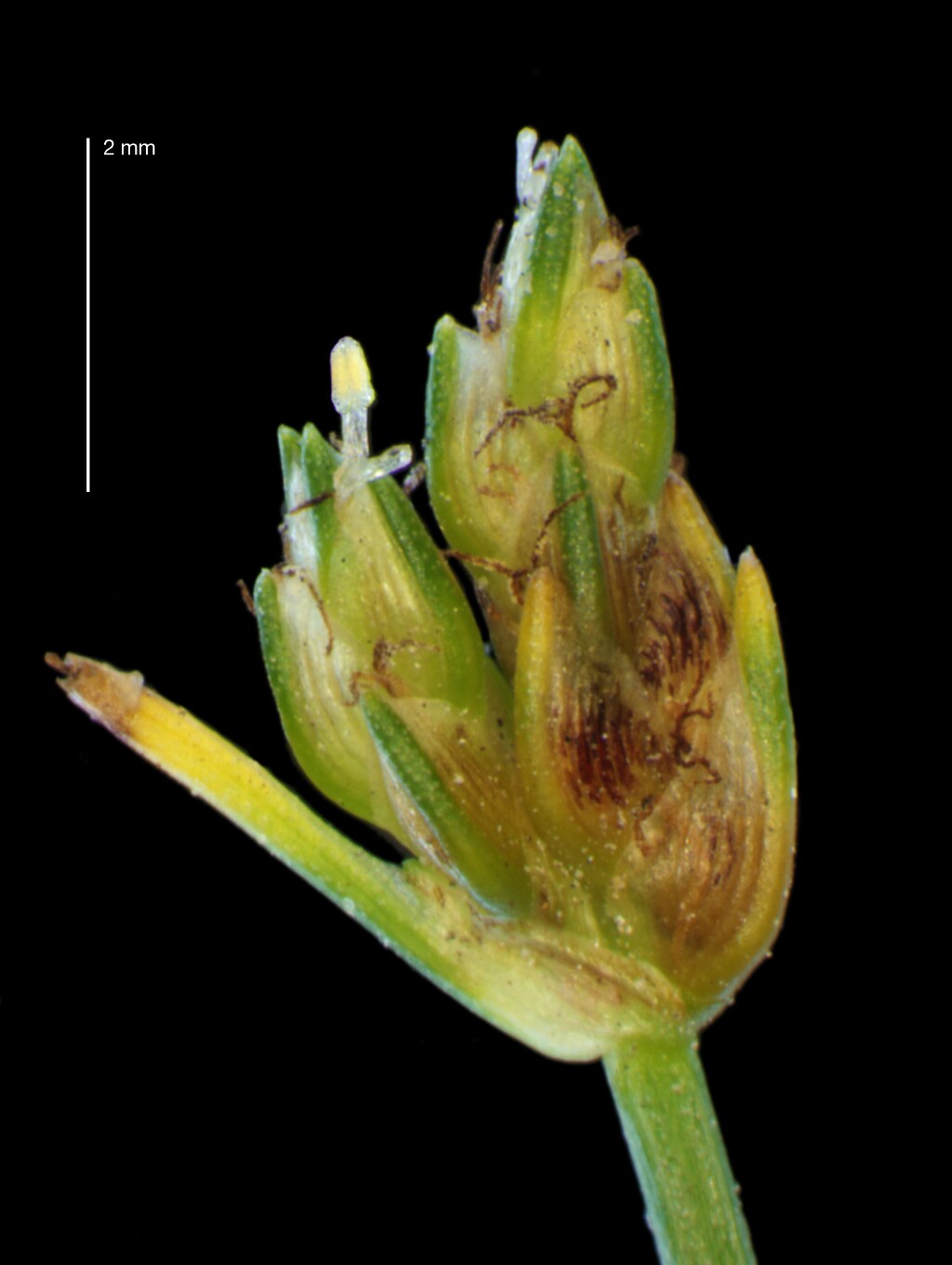Ficinia marginata
(Thunb.) Fourc.Small tufted annual. Culms filiform, to 10 cm high. Leaf-blades shorter than culms, to 4 cm long. Spikelets 1–6(–12) per inflorescence, 3–7 mm long; involucral bract erect or spreading, longer than spikelets; glumes rather rigid, with stout keel, sides shining with 4–6 conspicuous nerves, straw-coloured, often with red-brown to blackish patches, 1.5–2 mm long; stamens 3; style 3-fid. Nut equally trigonous, obovoid to ellipsoid or broad-ellipsoid, angles subacute, minutely roughened or reticulate, ± shining, straw-coloured to dark brown, c. two-thirds length of glume, 0.8–1.2 mm long, 0.5–0.7 mm diam. Flowers spring.
LoM, MuM, Wim, GleP, Brid, VVP, VRiv, RobP, MuF, GipP, OtP, WaP, Gold, CVU, GGr, DunT, NIS, EGL, EGU, WPro, HSF, HNF, OtR, Strz, MonT, VAlp. LoM, MuM, Wim, GleP, Brid, VVP, VRiv, RobP, MuF, GipP, OtP, WaP, Gold, CVU, GGr, DunT, NIS, EGL, EGU, WPro, HSF, HNF, OtR, Strz, MonT, VAlp. Also WA, SA, NSW, Tas. Southern Africa. Very widespread and common on light, often sandy soils in the lowlands (rare on heavier soils of Wimmera, Riverina and Volcanic Plain).
It is not clear whether this species is native or introduced; however, its occurrence in Victoria in often remote and undisturbed areas would suggest it is an indigenous rather than introduced species. Recent molecular research has shown that this species belongs in Ficinia rather than Isolepis (Muasya and Larridon 2021).
 Spinning
Spinning